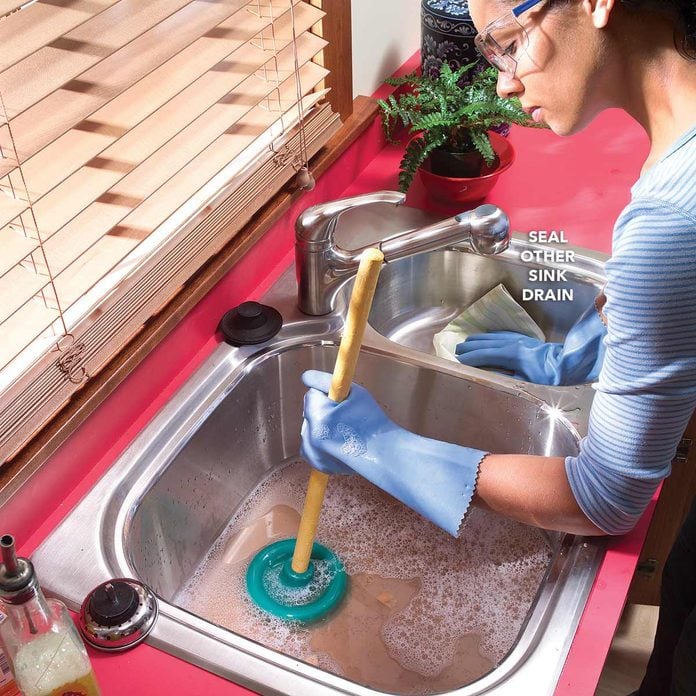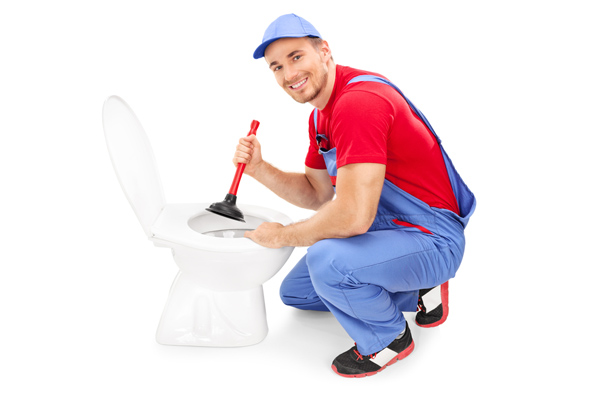Applying Plungers and Drain Cleaners: Best Practices
Applying Plungers and Drain Cleaners: Best Practices
Blog Article
How do you feel in regards to Tips on How to Effectively Use a Plunger?

Introduction
Appropriate maintenance of house drains pipes is essential for avoiding obstructions and ensuring smooth water flow. One of the trick devices in every house owner's toolkit is the plunger, alongside different drainpipe cleansers made to tackle stubborn clogs efficiently. This write-up checks out just how to utilize bettors and drainpipe cleansers successfully to maintain your drains moving easily.
Section 1: Understanding Bettors
Types of Plungers
There are a number of kinds of bettors readily available, each developed for various kinds of drains pipes and blocks. One of the most typical types consist of cup plungers, flange bettors, and accordion bettors.
Exactly How Plungers Work
Plungers service the principle of producing pressure and suction to remove blockages. When effectively used over a drainpipe, they develop a vacuum cleaner that can pull out particles or break up blockages.
Choosing the Right Bettor
Picking the right bettor relies on the type of drainpipe and the nature of the clog. Cup bettors are optimal for sinks and tubs, while flange bettors are better suited for bathrooms because of their style.
Usual Mistakes with Bettors
Staying clear of these errors ensures effective plunging: improper seal around the drainpipe, not enough pressure, and not clearing surrounding debris.
Section 2: Using Plungers Properly
Prep work
Prior to diving, make sure the bettor covers the drainpipe totally and develops a tight seal. Clear any type of visible particles around the drain opening.
Method
Beginning with mild diving movements to build suction. Boost pressure slowly, making use of a consistent rhythm. Repeat as required until the drain removes.
Fixing Tips
If plunging does not work, attempt changing the seal, using petroleum jelly for a much better seal, or making use of a various type of bettor.
Section 3: Understanding Drain Cleaners
Kinds Of Drainpipe Cleaners
Drain cleansers can be chemical or enzymatic. Chemical cleansers make use of solid chemicals to liquify blockages, while chemical cleansers use all-natural enzymes to break down raw material.
Just How Drainpipe Cleansers Work
Chemical cleaners react with obstructions to liquify them, while chemical cleansers break down natural products like hair and grease without harming pipelines.
Security Factors to consider
Constantly wear gloves and eye defense when utilizing chemical drain cleaners. Guarantee sufficient ventilation and comply with manufacturer guidelines very carefully.
Eco-Friendly Alternatives
Think about using vinegar and baking soda or enzyme-based cleansers for eco-friendly alternatives that are much safer for pipelines and the atmosphere.
Area 4: Using Drainpipe Cleansers Properly
Application Strategies
Pour chemical cleansers straight right into the drain opening. Allow them to help the advised time before purging with warm water. Enzymatic cleansers must rest overnight.
Safety measures
Stay clear of mixing different kinds of cleansers, as this can generate harmful fumes. Never ever make use of chemical cleansers along with a bettor, as spilling can happen.
Taking Care Of Stubborn Blockages
For consistent clogs, take into consideration utilizing a pipes snake or calling a professional plumbing to prevent damages to pipelines.
Conclusion
Finally, comprehending just how to use bettors and drainpipe cleansers efficiently is crucial for preserving healthy and balanced pipes systems. By choosing the right devices and strategies, homeowners can deal with small clogs and protect against major pipes concerns down the line.
How To Properly Use A Plumbing Snake To Clear Drains
When any drain clogs in our home arise, we tend to gravitate toward the plunger and little else. In cases where the plunger and its vacuum-created pressure are not able to clear clogs, many immediately move to harmful chemicals or simply call their plumber to fix the issue.
we’re happy to help with all drain cleaning needs and concerns. This includes informing you on a few other home remedies you may have at your disposal for minor to moderate clogs, one of which is the use of a plumbing snake. Many people have never used one of these before – let’s go over the steps to take when your drain clogs and you have a plumbing snake available.
Attempt Plunger Use
The first step here, as we noted above, should indeed be to grab your plunger when you notice a drain clog and attempt to resolve it this way. If you’re unsure how to use a particular type of plunger, our plumbers can answer any questions you have. If this doesn’t do the trick, however, you move on to the snake.
Locate And Prepare Snake
A plumbing snake is a metal or plastic device that’s generally about a quarter of an inch thick. It’s design with significant extensions, meant to reach down into your clogged drain and push the clog out. Snakes also contain drain augers that will latch onto and push stubborn blockages.
If your plunger doesn’t clear a clog, locate your snake and bring it to the drain in question. We also recommend keeping a bucket nearby to collect the clog once you pull it out, plus we’d advise wearing goggles and possibly protective gloves.
Feed Snake
Once you’re ready to go, feed the snake slowly down the drain, using the crank device it comes with to keep it moving until it finds the clog. Once this happens, much of the clog will be latched onto the coil so you can pull it out, while the rest will simply break up and flow downward.
Detach Debris
Remove the snake slowly from the drain, and once you’ve done so, pick off any debris that’s stuck to the coil. This is another area where wearing gloves is a must.
Flush Drain
Finally, take a few minutes to ensure the snake has done its job correctly. If you’ve been using it on a toilet, flush the toilet a couple times and make sure everything flows well. If you’ve used it on a different drain, flush it with some room temperature water.
https://www.mybuddytheplumber.com/blog/how-to-properly-use-a-plumbing-snake-to-clear-drains/

Application Strategies
Pour chemical cleansers straight right into the drain opening. Allow them to help the advised time before purging with warm water. Enzymatic cleansers must rest overnight.
Safety measures
Stay clear of mixing different kinds of cleansers, as this can generate harmful fumes. Never ever make use of chemical cleansers along with a bettor, as spilling can happen.
Taking Care Of Stubborn Blockages
For consistent clogs, take into consideration utilizing a pipes snake or calling a professional plumbing to prevent damages to pipelines.
Conclusion
Finally, comprehending just how to use bettors and drainpipe cleansers efficiently is crucial for preserving healthy and balanced pipes systems. By choosing the right devices and strategies, homeowners can deal with small clogs and protect against major pipes concerns down the line.
How To Properly Use A Plumbing Snake To Clear Drains
When any drain clogs in our home arise, we tend to gravitate toward the plunger and little else. In cases where the plunger and its vacuum-created pressure are not able to clear clogs, many immediately move to harmful chemicals or simply call their plumber to fix the issue.
we’re happy to help with all drain cleaning needs and concerns. This includes informing you on a few other home remedies you may have at your disposal for minor to moderate clogs, one of which is the use of a plumbing snake. Many people have never used one of these before – let’s go over the steps to take when your drain clogs and you have a plumbing snake available.
Attempt Plunger Use
The first step here, as we noted above, should indeed be to grab your plunger when you notice a drain clog and attempt to resolve it this way. If you’re unsure how to use a particular type of plunger, our plumbers can answer any questions you have. If this doesn’t do the trick, however, you move on to the snake.
Locate And Prepare Snake
A plumbing snake is a metal or plastic device that’s generally about a quarter of an inch thick. It’s design with significant extensions, meant to reach down into your clogged drain and push the clog out. Snakes also contain drain augers that will latch onto and push stubborn blockages.
If your plunger doesn’t clear a clog, locate your snake and bring it to the drain in question. We also recommend keeping a bucket nearby to collect the clog once you pull it out, plus we’d advise wearing goggles and possibly protective gloves.
Feed Snake
Once you’re ready to go, feed the snake slowly down the drain, using the crank device it comes with to keep it moving until it finds the clog. Once this happens, much of the clog will be latched onto the coil so you can pull it out, while the rest will simply break up and flow downward.
Detach Debris
Remove the snake slowly from the drain, and once you’ve done so, pick off any debris that’s stuck to the coil. This is another area where wearing gloves is a must.
Flush Drain
Finally, take a few minutes to ensure the snake has done its job correctly. If you’ve been using it on a toilet, flush the toilet a couple times and make sure everything flows well. If you’ve used it on a different drain, flush it with some room temperature water.
https://www.mybuddytheplumber.com/blog/how-to-properly-use-a-plumbing-snake-to-clear-drains/

Do you really like more info about ? Place a remark directly below. We would be delighted to hear your insights about this blog post. We are looking forward that you come back again before long. Enjoyed reading our article? Please quickly share it. Let others find it. Thank you for your time spent reading it.
Suggested Site Report this page